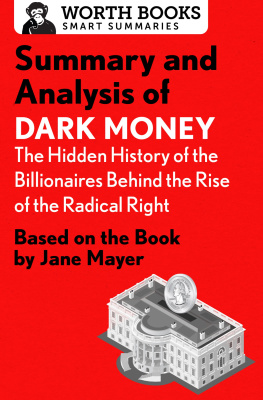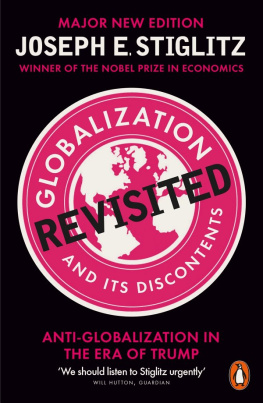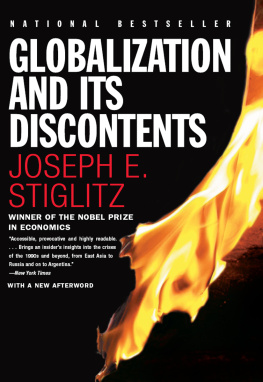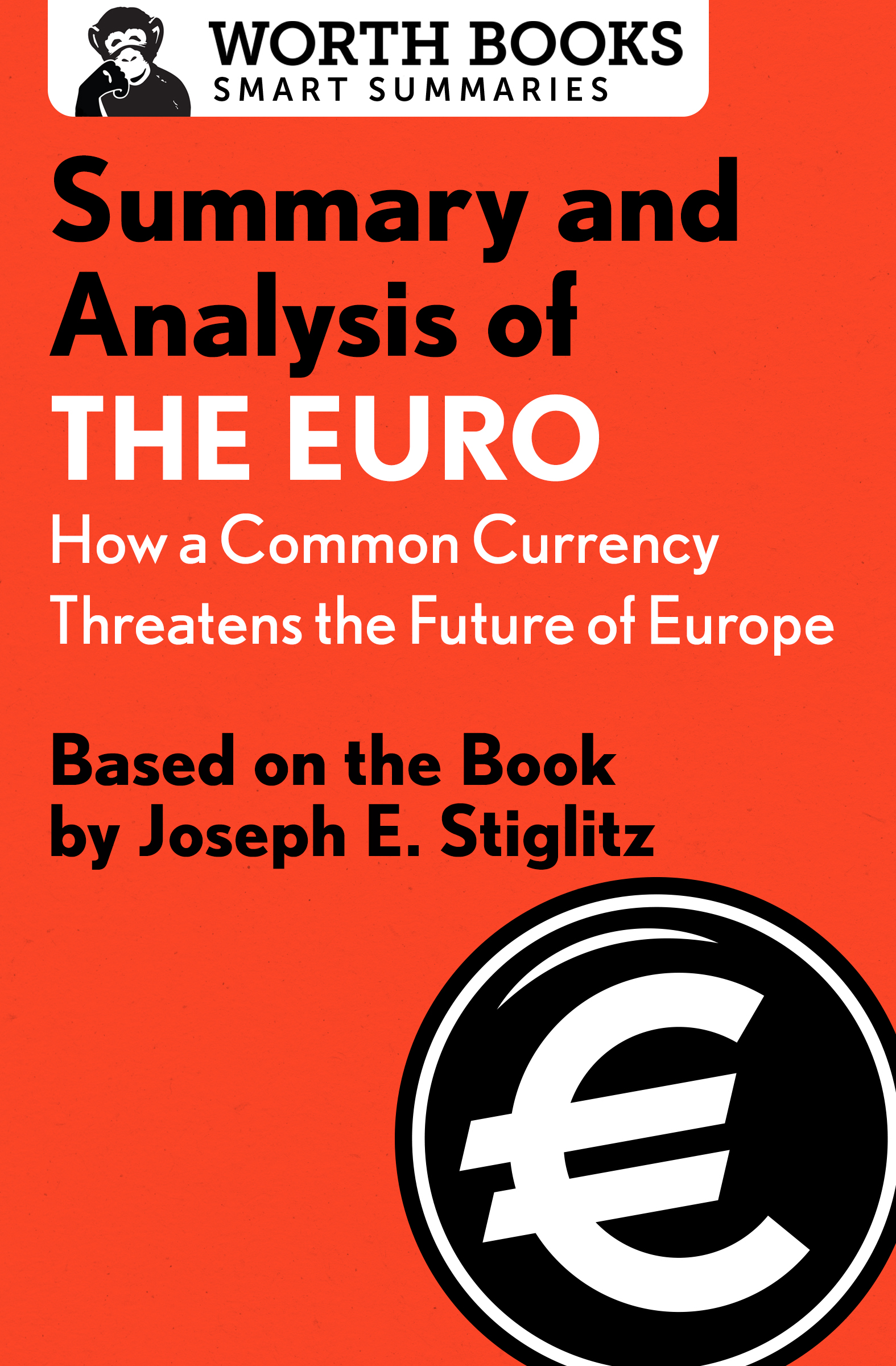Summary and Analysis of
The Euro
How a Common Currency Threatens the Future of Europe
Based on the Book by Joseph E. Stiglitz

Contents
Context
The Euro , written by Nobel Prizewinning economist Joseph E. Stiglitz, was released in August 2016, during a lull in the eurozone crisis. Yet these were not calm times; Europe itself was at a moment of dramatic change. The influx of refugees from the Middle East was testing European integration, creating significant political headwinds for German Chancellor Angela Merkel, who had recently admitted around one million emigrants into Germany. Meanwhile, Britains vote on June 23rd to exit the European Union continued to send shockwaves around the world. On July 13, Theresa May became Prime Minister of the United Kingdom, promising to enact the British exit, or Brexit, in 2017.
Further global economic and political uncertainty continued to cloud the outlook for Europe as reservations created by the United States 2016 presidential race seeped into European minds. Amidst all of these dramatic political events, the eurozone continued to endure anemic economic growth. While the United States had begun to truly recover from the 2008 financial crisis, mid-2016 the eurozone seemed to still be mired in relative stagnation.
Overview
In The Euro, Stiglitz argues that the fundamental cause of the eurozones recent economic difficulties was the creation of a single currency without the institutions to support it. The euro bound together 19 countries with very different economies (and very different views about economics), but it did not include the institutions or rules to make such a union succeed. The results of this union are clear: Although the United States has experienced growth since the 2008 financial crisis, Europe is stagnant, and eurozone unemployment remains over 10 percent. Even Germany, held up as a model for other European countries, is growing at a meager average of 0.8 percent per year. Greece, Italy, Ireland, Finland, and Portugal have seen their GDP shrink more during the euro crisis than during the Great Depression.
A core problem is that the euro is not flexible. The value of the US dollar is correlated to the health of the US economy, but the value of the euro is correlated to the health of 19 different economies. Imagine if the United States were undergoing an economic contraction. The value of the dollar would fall, making American goods cheaper for foreigners and foreign goods more expensive for Americans. This adjustment would encourage foreigners to buy American goodshelping US employment and eventually leading to a recovery. Greeces currency, the euro, cannot adjust solely to Greeces specific situation, so a process of internal devaluation in Greece must instead take place. That means lower wages for Greek workers and lower prices for Greek products. Yet this is hardly a solution comparable to the traditional exchange rate mechanism. Under internal devaluation, Greeks with debts who take a pay cut find it harder to pay off their debts. The Greek government, already strapped for cash, in turn takes in less in tax receipts, which further weakens its position.
The weakness of the Greek government endangers its banks. The United States has a national bank deposit scheme, so bank deposits in Montana are just as protected as those in the wealthier state of New York. This is not true in Europeeach member of the eurozone has its own separate deposit insurance. In the United States, if there were a crisis and banks had to be capitalized, the federal government could theoretically print an unlimited amount of money to backstop its banking system. Greece (or any other eurozone country) cannot do this. Therefore, as Greek banks lost more and more of their capital, they became weaker and weaker, creating a vicious cycle.
While the euro was supposed to bring together countries like Germany and Greece, economically tightening their bonds, the inflexibility of a partial union actually pushed them apart. The eurozone currently does not have the tools to deal with these issues, partly because European institutions account for a very small amount of spending in Europe.
In contrast, although American states share the same currency, they are stitched much closer together than EU member nations. The EUs spending is equal to around 1 percent of GDP, while in the United States, federal spending is around 20 percent. If California is booming and South Dakota has economic problems, South Dakotans will receive federal government assistance, and can also easily move to another state with a stronger economy. In the United States, the national language is English, the culture of each state is relatively similar, and federal regulations are homogenous. This is not the case in Europe. A Greek who wants to move to Paris needs to not only learn French, but needs to adapt to a very different culture and a new set of laws. This makes it harder for the average citizen to emigrate, especially after an economic nosedive.
The fatally flawed design of the euro has had a detrimental effect on other related policies. For example, the European Central Bank (ECB), which controls the euro, has a mandate to focus only on preventing inflation. The US Federal Reserve, on the other hand, also focuses on economic stability, growth, and full employment. The ECBs sole focus on preventing inflation has skewed policy and resulted in extra unemployment.
Another major problem has been the austerity policies forced upon certain countries like Greece and Spain. Instead of pro-growth policies, the Troika (a group made up of the European Commission, the ECB, and the International Monetary Fund) has forced these countries to raise tax rates and slash government spending. This results in lower take-home pay for workers, which damages the economy when people have less to spend on goods and services. Lower spending, in turn, results in a weaker economy. Higher taxes encourage greater tax avoidance, while the combination of these failed policies further encourages skilled labor to emigrate. Austerity policies are hurting Europes recovery, and should be replaced with increased government spending and the forgiveness of some debt.
Stiglitz believes that the best solution to all of these problems is more Europe. The eurozone should create a banking union so all eurozone banks are backstopped by the ECB, instead of by separate national governments. Debt should be issued at a eurozone-wide level, potentially through the proposed Eurobonds. The eurozone should implement structural reforms, such as improved bankruptcy laws, reduced tax competition between eurozone member states, and automatic stimulus in case of a crisis. The ECB must also be reformed to focus on full employment and economic growth, instead of its current mandate to simply combat inflation.
A less preferred, but still workable option, is less Europe. This means one or more countries leaving the eurozone. If Greece left, it could implement an electronic currency that would allow it to replace the euro and would lead to a greater ability to collect taxes. Greece could implement a system of trade tokens, sometimes known as Buffett chits. Essentially, this would require imports to be in proportion to exports, resulting in a trade balance or surplus, thus creating long-term stability. Another option involves Germany, and perhaps other northern European member countries, leaving the eurozone, which would minimize some of the economic contradictions inherent in the single currency.











